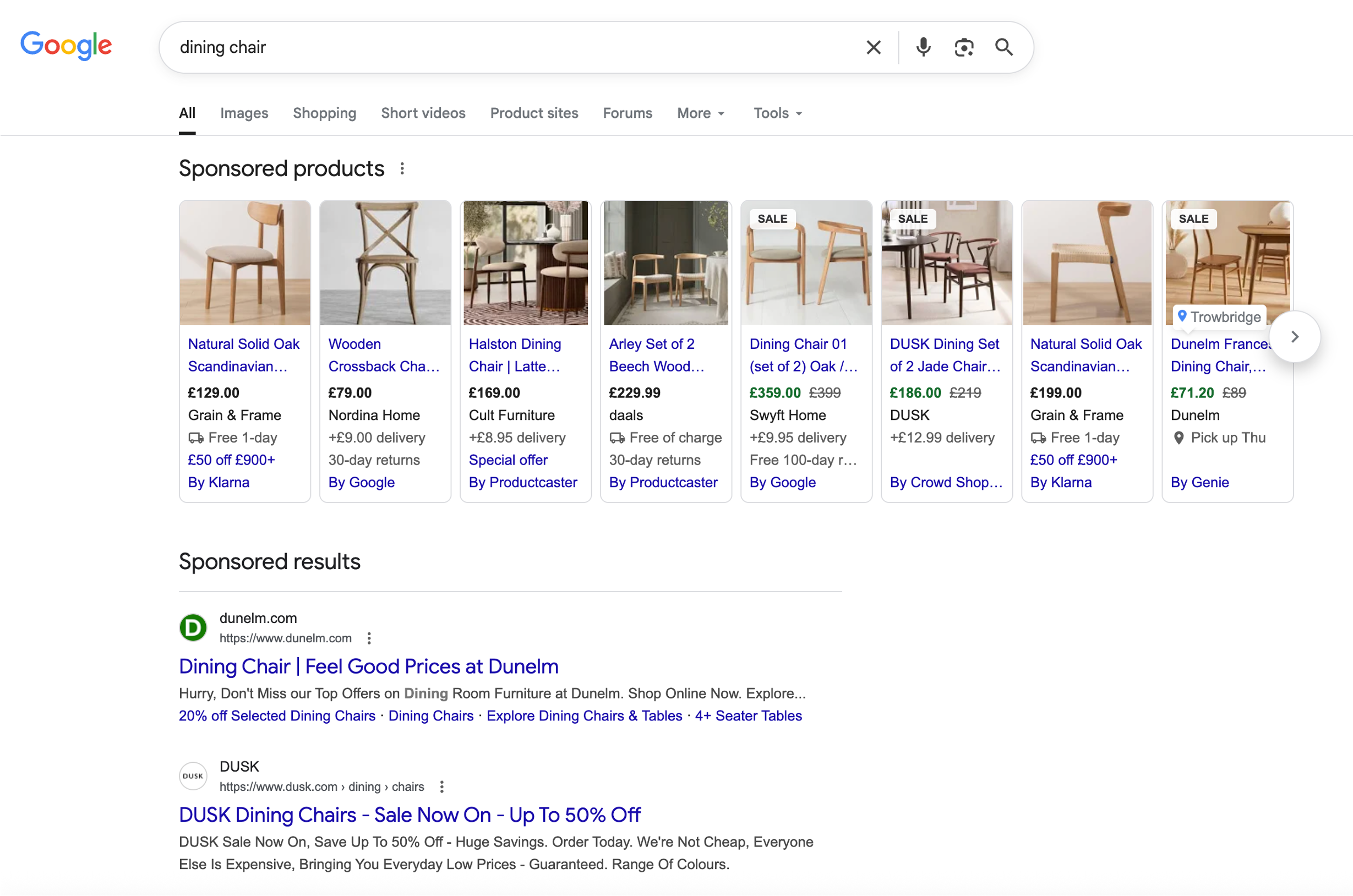Google Ads can be used as part of an effective digital marketing strategy – but only when done right. Although pay-per-click advertising can be an easy win, there are pros and cons to using Google Ads.
What is pay-per-click advertising?
Pay-per-click advertising – usually shortened to PPC – is a form of digital advertising where advertisers pay a fee every time someone clicks on or interacts with their advert.
PPC can be used to:
- Increase webpage traffic
- Convert prospective customers
- Acquire new business
- Spread your brand
What are Google Ads?
Google Ads are Google’s version of pay-per-click advertising. When you search for something in Google, you’ll usually see ads at the top and bottom of the search results page. The businesses displayed have optimised these ads to appear when someone types in your search query.

Love ’em or hate ’em, Google Ads can be very effective in bringing in web traffic for businesses. The secret is to target your ads using keywords relevant to your business:
- A business bids on keywords they want their Google Ads to show for.
- Google then enters advertisers and their corresponding ads into an ‘auction’. This is to work out which ads are most relevant to a particular search query.
- The ads that Google determines ‘win’ the auction are then displayed at the top (and bottom) of the search results page.
The advantages of Google Ads
1. Budget flexibility
How much you spend on your Google Ads is up to you – and you can play around with your maximum budget to see what works best.
It’s very important to test your keywords and ads to check what works and what doesn’t, what brings in clicks and what doesn’t seem to resonate. By experimenting with ads on a smaller scale (i.e. a limited budget), you can acquire reliable data that you can then apply to campaigns with more money behind them.
2. Audience focused
Unsurprisingly, Google Ads are a brilliant way to get in front of your key audience – and, more importantly, people who are actively searching for your products or services.
It stands to reason that if you’re closer to the top of search results – i.e. your SEO is working for you – your business is more likely to catch the eye of prospective customers. Google Ads now take up more space in search results at the top of the page, further increasing your chances of being discovered.
3. SEO crossover
PPC also has fantastic crossover opportunities with SEO. Researching your keywords for Google Ads provides valuable insight into the SEO keywords you should be including in your website content too.
4. Keyword and landing page testing
Google Ads are also a great way to learn more about your audience and how they interact with your website. Use your Google Ads to test which keywords effectively drive traffic to your business, work out if your landing pages are up to scratch and the user journey of your website is clear, and more.
This can be beneficial for working out a marketing strategy for SEO as well. The more you know about your audience, what they’re searching for, and what they want from your website, the better you can design a site that satisfies their needs and helps users convert.
The cons of Google Ads
Whilst there are many benefits to pay-per-click advertising, it does have its drawbacks too.
1. Competitive pricing
Some industries are incredibly competitive when it comes to Google Ads – which usually means an increase in cost per click.
If lots of your competitors are bidding on the same high-profile keywords, it unfortunately stands to reason that the price of those keywords will rise. If you can’t up your bid to stay on top of the competition, your Google Ads will not display prominently at the top of search results.
2. Short term gains
Injecting money into a healthy Google Ads budget might be tempting to increase your business’s exposure – but once that budget’s gone, it’s gone. SEO, whilst a ‘slower burn’ than PPC, improves your website’s organic ranking steadily over time. If properly maintained, that increase in organic ranking will remain consistent. Google Ads, on the other hand, are entirely reliant on budget.
To be truly effective, you can’t just throw money at a Google Ads campaign. You need to set aside time to research keywords, monitor the ads to see if they’re performing as you expected them to, and – if they’re not – work out how to fix them.
3. Landing page reliant
Your Google Ads are given a Quality Score based on the quality of the landing pages they direct to. If your website is poorly designed, or your landing pages are confusing and visitors quickly leave them, your ads will receive a low Quality Score – meaning you have to pay more for clicks.
This is why it’s vital that your PPC has a carefully thought out strategy behind it. Without strategy, you run the risk of:
- Wasted click budget: Ads set up with keywords that don’t align with your business’s offering, leading to clicks from the wrong users who don’t convert.
- Weak landing pages: Ads directing users to landing pages that don’t satisfy their search query, or deliver on what your ads promised.
- Confusing user journey: If your website is confusing and the path to the end goal unclear, your ad campaigns won’t convert.



